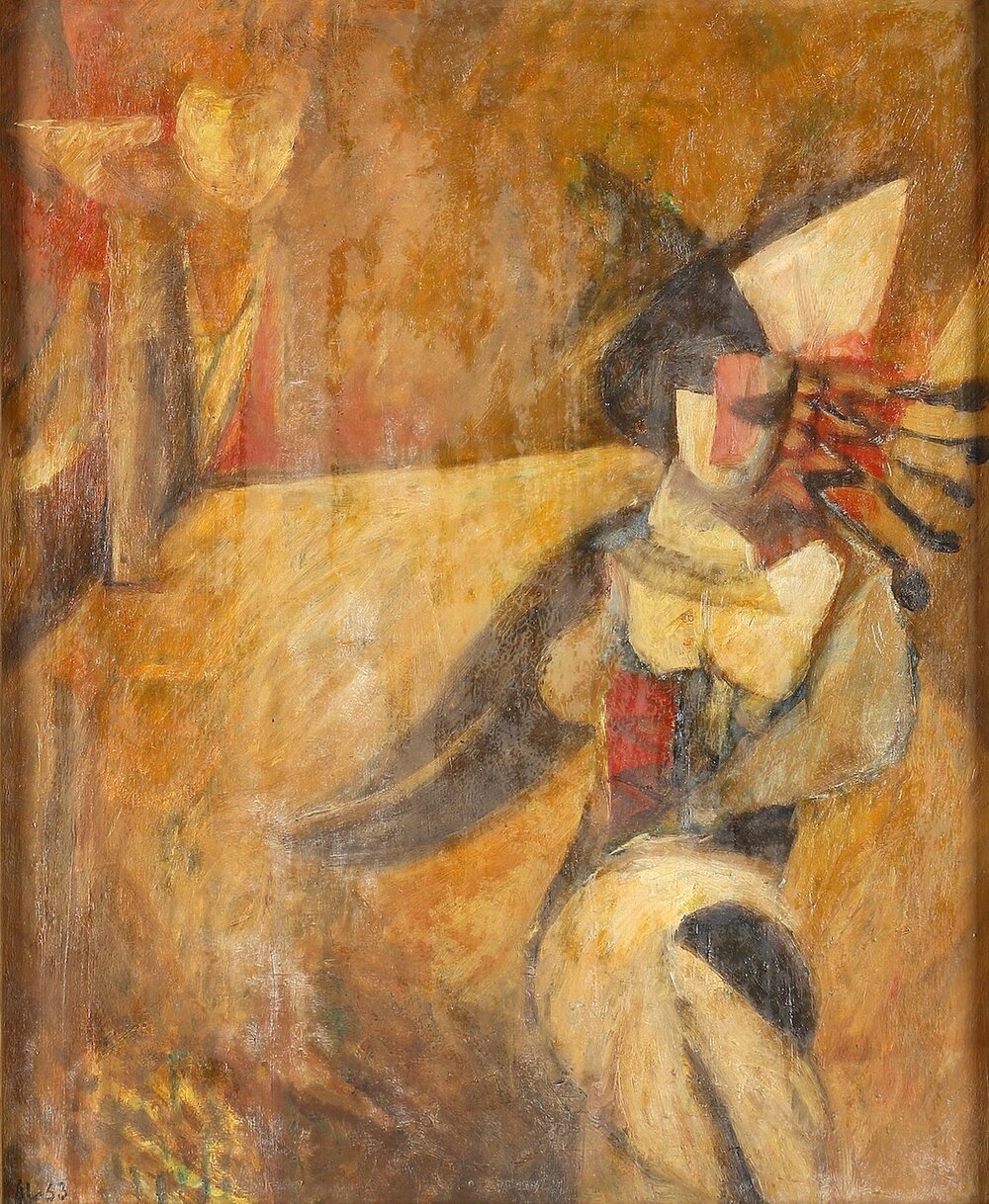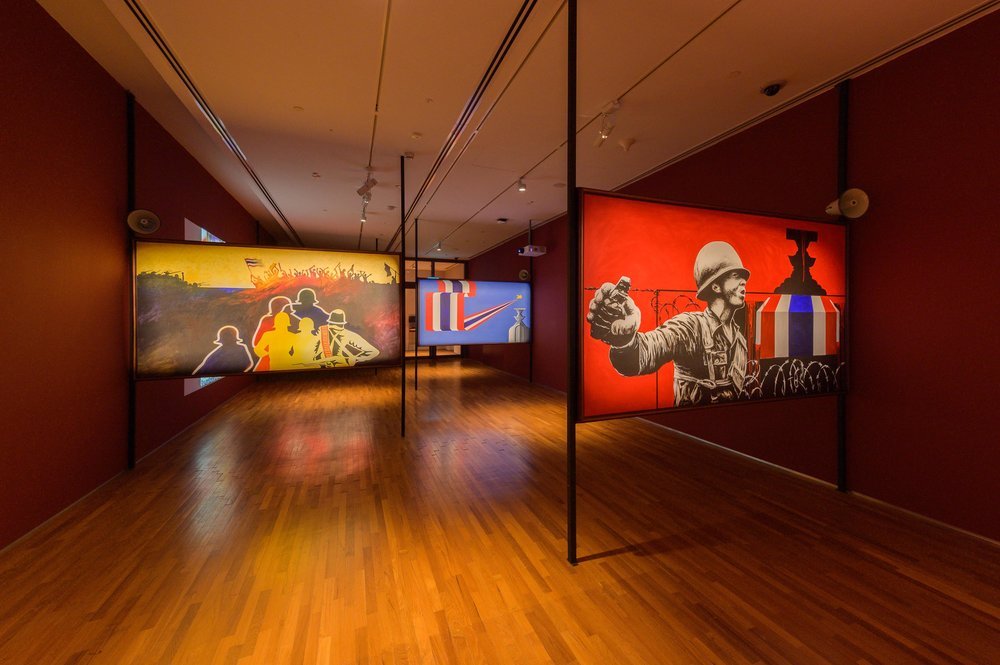Bondage, Submission, and Exploitative Capitalism
Review of selected works by Kawita Vatanajyankur
By Blake Palmer
Throughout her work, Thai artist Kawita Vatanajyankur explores the objectification of bodies, especially female bodies, for the production and sale of cheap commodities under consumer capitalism. Using video, still images, live performance and mixed media, she illustrates how violent and exploitative practices are leveraged against labourers’ bodies to bind and subdue them to their role as tools in a cycle of production and consumption. She connects the plight of dehumanised workers with the commodities they produce and confronts viewers with their role in this dehumanising process.
We will explore these themes in selected works from Vatanajyankur’s oeuvre, using ‘Shuttle’ (2018), ‘The Ice Shaver’ (2013), ‘The Spinning Wheel’ (2018) and ‘Untangled’ (2018) to show how the artist draws attention to the mechanisms used to perpetuate the use of cheap labour and feed a continuing loop of consumption.
Using her body as a central element in each of her pieces, Vatanajyankur fully integrates herself, functionally and structurally, in a co-dependent fusion of labourer and machine. In her video and performance work, which make up the majority of her oeuvre, she engages in repetitive movements. She performs as a component mechanism in various machines of production with a meditative focus that resembles a perverse state of industrialised enlightenment. Instead of freely clearing her mind of desire in order to expand conscious awareness, she simulates a compulsory alienation from personal desire. She diminishes her consciousness to better suit the needs of the machine she inhabits.
Kawita Vatanjyankur, ‘Shuttle', 2018, HD video, dimensions variable. Image courtesy of the artist and Nova Contemporary.
This alienation or estrangement from acting in accordance with one’s own will is illuminated by Marx’s concept of the alienation of labour. In his essay ‘Estranged Labour’, Marx suggests that labour that requires alienation of the self “mortifies [the labourer’s] body and ruins his mind,”1 and is tantamount to forced labour. Labourers are compelled to dehumanise themselves and acquiesce to becoming merely an appendage of the machine. This becomes, as Marx puts it, “a labour of self-sacrifice, of mortification.”2 This is exemplified in her video work ‘Shuttle’, in which the artist is interwoven with the frame of a loom, functioning in the role of the titular shuttle. She submits herself to work that punishes the body, lunging repetitively with the twine wrapped around her waist, allowing her bones to continually grind into the metal frame that supports her, treating her body like an object, i.e. an appendage of the machine. She enacts a symbolic shedding of her humanness, and surrenders her body and identity to the repeating motions of an apparatus whose very functionality is staked in her continued subjugation.
Kawita Vatanjyankur, ‘The Ice Shaver', 2013, video still, dimensions variable. Image courtesy of the artist and Nova Contemporary.
Vatanajyankur frequently commits to performances that take a physical toll on her body. In her video work ‘The Ice Shaver’, the artist plants her face into a block of ice that is positioned over a plane shaver, using the weight of her face and motion of her body to move the ice against the razor blade. The sight is intentionally discomforting. From her perspective, the submission to pain and bodily damage she endures for her work is an unremarkable, normalised part of the lives of exploited workers. “I lose a sense of self, a sense of belonging. What I find is that I no longer have emotion that is attached to the pain,” Vatajyankur explains.3 In other words, in order to endure, she must lose her sense of self. But she knows there are limits to the parallel between her plight and the struggles of exploited labourers, pointing out that her performances, even her long ones, will end. Yet there is no such end for the labourers, for whom she stands in surrogate. She hopes to experience, in the limited manner that art can afford her, what it means to be objectified and “treated as a machine.”4 At the same time, she confronts her audience with a re-enactment of the severe human cost of commodity production without the luxury of physical or intellectual distance.
Kawita Vatanjyankur, ‘Untangled', 2018, HD video, dimensions variable. Image courtesy of the artist and Nova Contemporary.
This fusion between labourer and machine is further woven in Vatanajyankur’s work through displays of bondage and restriction. Commodity capitalism relies on its exploited labour class and there are measures in place to prevent any fundamental changes to this dynamic. While there are examples of overt physical bondage that ensure ongoing submission, like the use of chattel slavery in Thailand’s shrimping industry,5 much of what binds labourers to exploitative work is more insidious and invisibilised. In her video work ‘Untangled,’ Vatanajyankur crawls across a white floor in an arduous effort to untangle a bright red rope from a web of invisible wire. The invisible wires can only be seen as they press into the artist’s skin, but they do as much to restrict her movement as the visible red rope wound tightly around her body.
Kawita Vatanjyankur, ‘The Spinning Wheel', 2018, 2 channel HD video, dimensions variable. Image courtesy of the artist and Nova Contemporary.
In ‘The Spinning Wheel’, she visually asserts that this bondage is not a flaw of the system, but is intrinsic to its designed purpose. In this work, she clings to a red, spinning mechanism while a length of white twine unravels itself from around her body, rotating her head-over-feet as it does so. While inhabiting this bound and precarious position, Vatanajyankur demonstrates the role of violence, overt or invisible, as a restrictive force by placing a large needle underneath the wheel. She notes that “I have to always hold tight to the wheel as it turns because if I fall out of this hamster wheel, if I fall out of this system and this cycle of repetitive work, then I know what happens.”6
In a capitalist system that subjects labourers to dehumanised relations, the consequences of workers attempting to escape the wheel by asserting their innate humanity are dire. They are bound to their situation by threats of multiple vectors of violence. In our interview, Vatanajyankur cited recent examples in which workers in the Cambodian garment industry, a group composed overwhelmingly of female-bodied labourers7, organized protests against the poverty-level wages at jobs where they were additionally subjected to physical, psychological and sexual violence.8 9 According to Vatanajyankur, the Cambodian government met these protests against economic violence with armed physical violence. They stated that they could not change labour laws or policies for fear that they would face economic collapse if they were unable to compete for the western market’s demand for cheaply manufactured textiles.
Forced submission creates an environment that perpetuates the objectification of labourers, allowing for their continued exploitation. This reality is not lost on the labourers Vatanajyankur interviews in her research, who tell her, “that they’re often seen as machines or tools.”10 They are dehumanised and dealt with merely as means of production. For Marx, political economy conceals this dehumanising exploitation “by not considering the direct relationship between the worker (labour) and production.”11 Vatanajyankur’s work exposes this relationship by confronting her audience with the process of exploitation in the same brightly wrapped packaging we would expect from its product.
Vatanajyankur pulls the viewer in by hijacking the candy-coated, brand-friendly presentation format used in corporate billboards and commercials, luring the viewer into her work with the promise of comfortable entertainment and engaging sensuality. What she offers instead are unsettling portraits of a human being exploited as a tool or machine in the name of production and consumer demand; just as much false advertising as the consumerist model she parodies.
1 Karl Marx, Economic and Philosophic Manuscripts of 1844. Translated by Martin Milligan. (Moscow: Progress Publishers, 1982), 28.
2 Ibid.
3 Kawita Vatanajyankur interview with Blake Palmer, September 2019.
4 Ibid.
5 Annie Kelly, “Thai seafood: are the prawns on your plate still fished by slaves,” The Guardian, January 23, 2018, https://www.theguardian.com/global-development/2018/jan/23/thai-seafood-industry-report-trafficking-rights-abuses.
6 Vatanajyankur, interview, 2019.
7 CARE International (2017), ‘I know I cannot quit.’ The Prevalence and Productivity Cost of Sexual Harassment to the Cambodian Garment Industry. Canberra: CARE Australia, https://insights.careinternational.org.uk/media/k2/attachments/SHCS_Full_Technical_Report_March_2017.pdf.
8 C. T. Prak, “Cambodian police, factory workers clash, 15 injured,” Reuters, May 8, 2011, https://www.reuters.com/article/cambodia-protest/cambodian-police-factory-workers-clash-15-injured-idUSL3E7G802E20110508.
9 “One killed in Cambodia garments worker protest violence,” BBC News, 2013, November 12), https://www.bbc.com/news/world-asia-24910835.
10 Vatanajyankur, interview.
11 Marx, Economic and Philosophic Manuscripts, 28.

















